Improving Skeletal Muscle Mass in Individuals with Cerebral Palsy
Over the last several months, I’ve combed through hundreds of research journals on the health and wellness of individuals with Down syndrome and Cerebral Palsy. Evidence of reduced cardiovascular fitness, activity level, and muscular strength are abundant and certain anatomical considerations are identified that must be accounted for. While the latter can’t be altered, I can’t help but wonder whether the former is simply a byproduct of opportunity. Do individuals with Down syndrome and Cerebral Palsy have the same access to exercise and physical activity as their peers? In the rare case that they do, are they being held to the same high expectations as their peers? If the answer is no, then it is likely that they aren’t being challenged in a way that elicits necessary growth in terms of health and performance. My plan is to change that.
Just watch the following video to see the ability, and the legitimacy of the workouts that our athletes are engaged in.
https://www.youtube.com/watch?v=5rReXm2aadU
We recently purchased an InBody 270 device for the gym. It provides a detailed scan; breaking down the body composition results into segmental muscle analysis. The reading of a typical scale reveals so little but the InBody allows us to have quantitative measurements of muscle mass in the left leg, right leg, left arm, right arm, and trunk region. Fortunate to have this technology accessible to us, I reached out to Dr. Jason Talanian at Fitchburg State University expressing interest in studying how our training programs influenced muscle growth in athletes with Cerebral Palsy, specifically in the lower body. We met to discuss what physical measurements and aspects of performance we wanted to explore.
However, three of our athletes are unable to stand on the InBody device for proper readings. I reached out to their research team and after submitting an equipment loan proposal, we were granted the use of their InBody S10 device until the end of January. The S10 is designed for individuals who are unable to stand independently or are immobile. Participants lie down and have electrodes attached to both ankles as well as thumbs and middle fingers. A small hiccup that we ran into that slightly delayed the timeline of our research project was that the S10 requires you to manually enter the individual’s bodyweight in order to get an accurate body composition reading. Not having a platform scale large enough to weigh someone in a wheelchair, I reached out to local nursing homes, veterinarians, concrete and construction businesses. It took several days before we finally found a place that would allow us to weigh in (huge thanks to our member, Lesley for the connection). Now with accurate bodyweight readings, we were able to re-run the S10 scans and collect accurate data for all five participants.
We will be conducting an eight week research project on the effects of a comprehensive strength and conditioning program for five individuals with Cerebral Palsy (four with Diplegic CP and one with Hemiplegic CP). Three of the participants are training three times per week and two of the participants will be training twice a week. All of our participants, who range in age from 10 to 29, will be following individualized training programs geared towards improving total body strength and aerobic conditioning.
Before beginning the eight weeks of training, we conducted a battery of assessments. While we are uncertain whether we will be using all of the data in our analysis of the results, it is better to be over-prepared than under-prepared. We are hoping to use this first go-around as a pilot study and fine tune our processes and training programs to elicit the best possible results with a larger research population.
Pre- and Post- Assessments -
Body Composition Reading using the InBody 270
Skeletal muscle mass (segmental analysis)
Body fat mass and basal metabolic rate
Dynamometer – Left and right hand grip strength
Aerobic Capacity Test on Treadmill – Start at a given pace and increase by 0.2 mph every 30 seconds until athlete asks to be done
Lower Body Strength – Supine Prowler Sled Leg Press
Upper Body Pressing Strength – Paused Bench Press, Max Push-ups, Prowler Sled Chest Press
Upper Body Pulling Strength – 30s Rowing Machine/Ski Erg “Wingate” Test -
Core Strength – Prone or High Plank
The three helping me implement the training programs. Dennis Peary (intern from UMass Lowell), Kyle Champlin (intern from Fitchburg State), and Nolan Laposta (Nashoba student) We are in the second week of training and our athletes are continuing to impress with the amount of effort they’re putting in to executing their programs. Subscribe to our YouTube Channel and follow us on Instagram @unified.hp to follow along until the end of 2018 as the study progresses.
If you know anyone with Cerebral Palsy who may benefit from a training program tailored to their ability, share this post with your friends. For more information, visit the Facebook, Twitter, or Instagram links below. We can be reached at unifiedhp@gmail.com (mailto:unifiedhp@gmail.com) .
